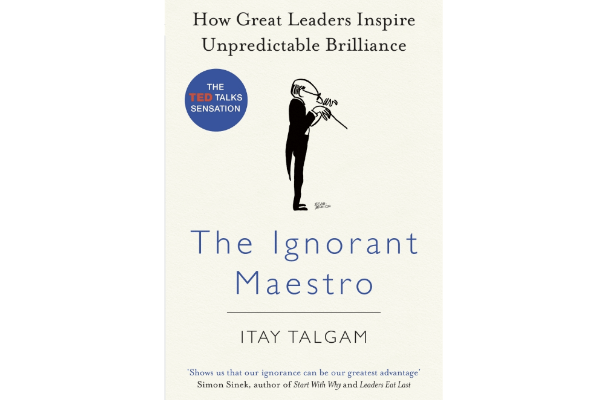Introduction: Leadership Is Influence, Not Authority
Table of Contents
There’s a reason why Gandhiji is considered one of the most powerful leaders the world has ever seen – not because he held a formal title or managed large teams, but because he inspired action. His ability to influence, to move people toward a shared purpose, is what made him extraordinary.
In our experience working with corporate teams, we’ve seen that the most respected leaders today are those who inspire — not those who command. The power of influence has taken centre stage in leadership development. Because in today’s workplace, people don’t just follow instructions — they follow belief.
Related Reading: Book Learning: Influence Without Authority by Allan R. Cohen
The Shift from Manager to Leader
The journey from being a manager to becoming a leader is no longer defined by how much control you have. Instead, it’s about how much impact you create.
In our leadership workshops, we often explore this transition with a simple question: Who would follow you if you had no title?
Gandhiji’s leadership was rooted in his values — truth, non-violence, perseverance, and inclusion. He lived them consistently, and people followed him because he represented what they aspired to become.
Related Reading: Building Leadership Skills for New Managers: A Comprehensive Guide
Leadership as a Ripple Effect
Among all the leaders of India’s freedom movement, Gandhi’s influence was unique — he didn’t just lead; he created more leaders. His greatest contribution was perhaps this: he empowered others to take charge.
In the corporate world, we’ve noticed that the best leaders do the same. They don’t hoard power; they distribute it. They don’t create dependency; they build confidence.
The success of a leader is reflected in the people they inspire, the culture they build, and the vision they leave behind.
Related Reading: Leadership Insights : How To Inspire Your Team
Traits of Leaders People Want to Follow
Over the years, we’ve worked with hundreds of managers across industries — helping them move from transactional management to inspirational leadership. Here are the common traits that people respond to most:
1. They Have a Vision That Resonates
A leader’s vision is their guiding star — not just for themselves, but for their teams. And it’s not enough to simply have a vision. The best leaders articulate it in ways that resonate with people’s aspirations.
Related Reading: How A Visionary Leader Can Enable Innovation?
2. They Create a Sense of Unity
Great leaders make everyone feel like they belong. They replace “I” with “we” and help teams see themselves as part of something bigger.
3. They Let Go of Micromanagement
Trust breeds autonomy. Autonomy fuels innovation. Leaders who stop micromanaging and start enabling often witness exponential growth — in both outcomes and morale.
4. They Give Freedom of Expression
Innovation requires dissent, and dissent requires psychological safety. Leaders who welcome opposing ideas foster cultures of creativity and critical thinking.
5. They Model Action, Not Just Words
People trust what they see more than what they hear. Leaders who show up with consistency, integrity, and humility inspire loyalty without needing to demand it.
L&D Takeaway: Leadership development today must go beyond skills — it must help leaders craft their narrative, define their vision, and model behaviours others want to follow.
The Role of Integrity in Leadership
Gandhiji wasn’t just a strategist or a visionary — he was someone who lived his values publicly and privately. That congruence of thought, word, and deed made people trust him deeply.
In our coaching engagements, we’ve found that employees tend to follow leaders whose decisions reflect integrity. It’s not about perfection – it’s about consistency and transparency.
When leaders live their values out loud, teams notice – and they follow.
The Leadership Multiplier Effect
Leadership is not about the number of people you manage. It’s about the number of people you empower. It’s about who you make better just by showing up the way you do.
We’ve seen this play out in teams where one inspired leader transformed morale, energy, and performance — not through grand speeches but through consistent behaviour.
Just like Gandhiji’s influence turned ordinary people into freedom fighters, workplace leaders have the opportunity to turn team members into intrapreneurs, problem-solvers, and future leaders.
Are You a Leader Who Inspires?
Ask yourself:
- Do people come to you for clarity — or only for approvals?
- Have you made someone believe more in their own potential recently?
- Do your actions invite trust?
If the answer is unclear, you’re not alone. Many managers today are on this very journey — from authority to influence, from task-driven to purpose-led.
In our leadership trainings, we often ask participants to write down the name of someone who inspired them deeply. Then we ask — what qualities did they live by? That exercise is often a mirror.
Related Reading: Leadership Insights : How To Inspire Your Team
The Modern Leader’s Mandate
Leadership today is not about having followers. It’s about raising leaders.
It’s about:
- Being real over being right
- Listening deeply before leading boldly
- Putting people first without compromising the mission
Brian Tracy once said, “The effective leader recognizes that they are more dependent on their people than their people are on them.” We’ve seen that truth unfold across organisations, especially in times of uncertainty.
Final Thoughts: Leadership That Lasts
The freedom movement wasn’t won through charisma alone. It was won through collective conviction. And that conviction came from inspired leadership.
If you’re a leader — formal or informal — your legacy won’t be defined by your title or your targets. It will be defined by how many people you helped grow, how many ideas you helped flourish, and how many moments of courage you helped create.
In our experience, when leaders show up with authenticity, clarity, and compassion — people follow. Not because they have to. But because they want to.
So the real question is: Are you managing outcomes? Or are you inspiring people?










